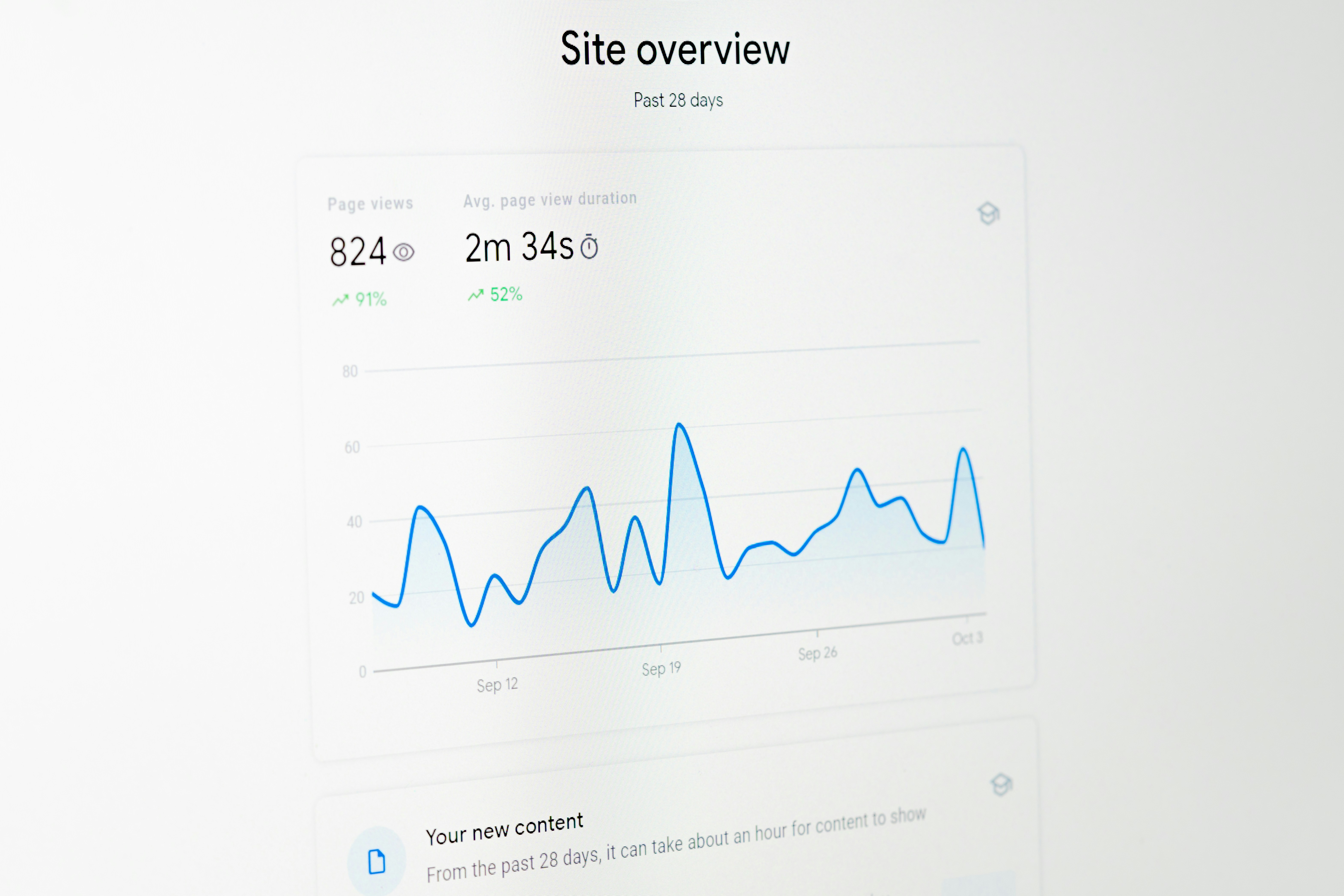Most business owners want to know the same thing: how long before this starts working? With ads, the answer is immediate. You launch a campaign and see clicks within hours. Content marketing is different.
SEO content takes time to build momentum, but once it does, the returns compound. A single blog post can rank for months or even years, steadily bringing in traffic and leads long after it was published.
In this article, we break down the timeline for SEO content, the factors that influence it, and what you can realistically expect in the first 3, 6, and 12 months.
Why SEO Content Takes Time
SEO takes patience because search engines need time to evaluate new content. When you publish a blog, Google first crawls and indexes it, then tests how it performs with real users. This is why rankings often fluctuate in the early weeks before they begin to settle.
Content also gains strength through consistency. One article can rank, but a library of interconnected posts signals expertise. Each new piece reinforces the last, building authority over time and making future content easier to rank.
Research from Semrush found that only 22% of pages created in the past year reached Google’s top 10. That number shows why persistence matters. The businesses that keep publishing are the ones that eventually break through.
The Key Factors That Affect SEO Timelines

No two businesses see the exact same SEO results. The speed of growth depends on both what you control and the environment you’re competing in.
Understanding these factors helps set expectations and gives you levers to influence the outcome.
Competition in Your Industry
Some markets are more crowded than others. A small local business targeting searches like “plumber in Austin” will face different challenges than a national software company competing for “CRM platform.” The more competitors are already investing in content, the longer it takes to earn a top spot.
To see how content impacts different sectors, explore our breakdown of 10 Industries That Can Benefit From Content Writing (And Why It Pays Off).
The practical takeaway: Find opportunities where the competition is lighter. Target long-tail keywords (such as “best running shoes for flat feet” instead of “best running shoes”) and niche topics.
These searches often convert better because they capture buyers with specific intent, and they let smaller businesses gain traction faster.
Domain Authority
Search engines give preference to sites with a track record. Older domains with steady publishing and backlinks often see new content rank quickly. New sites, on the other hand, usually face a ramp-up period while Google learns to trust them.
That trust builds with consistency. Each new article, internal link, and external mention raises your authority. The early months can feel slow, but the more you publish, the shorter the wait becomes for future posts to gain visibility.
Content Quality
Search engines prioritize content that delivers real value. A 400-word article that barely skims a topic rarely ranks, no matter how often you publish. Content that answers questions in depth, backed with data, examples, and clarity, is far more likely to stand out.
Think of it from the reader’s perspective: if your article is the one that fully solves their problem, Google will notice. Depth, originality, and alignment with search intent are what separate content that lingers on page three from content that earns a top spot.
Publishing Consistency
Publishing one or two articles can generate traffic, but consistent output is what builds authority. Over time, your content library starts to reinforce itself.
One post links to another, creating topical clusters that signal expertise to search engines and make it easier for future content to rank.
Whether you publish once a week or several times a month, the key is to keep going. A consistent cadence trains both your audience and Google to expect fresh, valuable material.
Backlinks and Promotion
Content alone can succeed, but it grows faster when people share and reference it. Backlinks from credible sites are one of the strongest ranking signals.
Promotion through newsletters, partnerships, and social channels also drives early traffic, which helps Google see that your content is worth surfacing.
For many businesses, the difference between content that quietly sits online and content that ranks is the effort put into distribution. Think of publishing as step one. Step two is making sure the right people see it.
What to Expect in the First 3 Months
The first three months of SEO content often feel slow. Google will index your articles, but that doesn’t guarantee immediate rankings. At this stage, search engines are testing your content against established pages to see how it performs.
Here’s what most businesses experience in the early months:
- Indexing without high rankings: Content appears in search results but usually sits beyond the first page
- Early impressions and light traffic: A handful of clicks begin to show, but growth feels modest
- The importance of consistency: Publishing regularly and targeting the right keywords builds authority, even if traffic is small at first
- Patience required: This is the stage where many businesses quit, assuming SEO is not working. In reality, it’s the groundwork that sets up future growth
Think of this period as the foundation phase. You’re building trust with search engines, creating a content library, and establishing signals that will make your efforts pay off in the months ahead.
The 3–6 Month Window
By the three to six month mark, momentum starts to build. Google has had time to crawl your site, test your content, and evaluate whether it deserves higher placement in search results. If you’ve been publishing consistently, this is when you may start noticing meaningful shifts.
Here’s what most businesses see in this stage:
- Rankings begin to stabilize: Articles that once bounced around in search results start holding steadier positions
- Traffic growth becomes noticeable: A stronger flow of visitors appears, especially if content is high-quality and aligned with search intent
- Page-one potential for long-tail keywords: Blogs targeting specific, lower-competition queries often reach the first page during this window
- Early conversions appear: Leads, sign-ups, or inquiries begin to come through, showing the first signs of content paying back
This stage is encouraging because results are no longer theoretical. The effort put in during the early months starts to show returns, and each new piece of content builds on the authority you have already established.
6–12 Months and Beyond
By the six to twelve month mark, SEO content begins to show its full potential. The work you put in earlier compounds, as multiple posts start ranking and reinforcing one another. Search engines now recognize your site as a more credible resource, which makes it easier for new content to gain traction faster.
Here’s what most businesses typically see at this stage:
- Compounding traffic from multiple posts: A growing library of content means several articles are driving visitors at once
- Higher authority and faster ranking: Google rewards the consistency, allowing new posts to climb the results more quickly
- Evergreen articles deliver steady leads: Posts published months ago continue to attract traffic and generate conversions without additional spend
- Clearer ROI emerges: With consistent traffic, leads, and sales, businesses can more confidently tie revenue back to their content efforts
This stage is where SEO content begins to feel less like an experiment and more like a proven growth channel. With a strong foundation, your library of content continues to deliver value month after month.
How to Speed Up the Process (Without Shortcuts)

SEO content will always take time, but there are ways to make progress faster without sacrificing quality. The focus should be on strengthening each article and building credibility over time.
One of the most effective steps is writing for search intent. If your article matches exactly what readers are looking for, it’s far more likely to rank and hold its place. Internal linking is another powerful tool. By connecting your posts together, you create a web of authority that search engines and readers both recognize.
Refreshing content keeps it relevant. Updating data, examples, and structure shows Google your articles are still worth ranking. Promotion matters too. Sharing content across email, social channels, or partnerships brings in early traffic and potential backlinks, which speeds up the process.
A few simple habits make a big difference:
- Write with the reader’s question in mind
- Interlink related posts as your library grows
- Revisit older content and update regularly
- Share content where your audience spends time
Above all, consistency is the factor that accelerates results the most. A predictable publishing schedule builds trust with both your audience and search engines, making each new post rank more easily than the last.
If you want to dive deeper into how to do this effectively, see our article: How To Write Blog Posts That Perform In 2025.
Realistic ROI Expectations
The biggest mistake businesses make with SEO content is treating it as a cost instead of an asset. Unlike ads, which stop delivering the moment the budget runs out, content continues to pay back for months or even years after it’s published.
To get the most value, set goals that go beyond “rankings.” The real ROI of content comes from steady traffic growth, stronger authority in your industry, and a consistent flow of leads.
Industry data supports this timeline. According to Ahrefs, the average page that ranks in the top 10 is more than two years old, and only 5.7% of pages reach the top 10 within a year. That means the payoff is real, but it requires patience.
Here’s what businesses can realistically expect:
- 3–6 months = visibility improves and early rankings appear
- 6–12 months = stronger traction, with leads and conversions starting to flow
- 12+ months = compounding ROI, as multiple posts work together to deliver traffic and revenue
SEO content works on a compounding curve. The longer you stay consistent, the more authority you build, and the faster each new article produces results.
Final Thoughts
SEO content takes time, but that’s what makes it powerful. While ads stop the moment you stop paying, a well-written article keeps working in the background. It builds visibility, earns trust, and generates leads long after it’s published.
The businesses that stay consistent are the ones that see real results. Success comes from patience and persistence, not quick wins.
If you’re wondering whether to keep content in-house or work with a partner, our article Is A Content Writing Agency Right For You? is a useful place to start.
.svg)
.png)
.png)
.png)
.png)